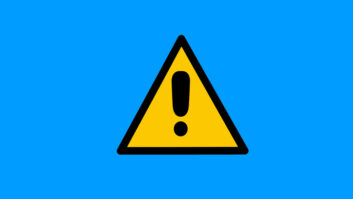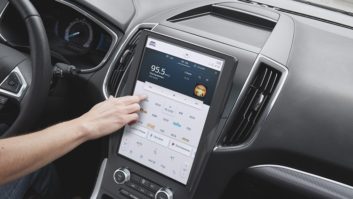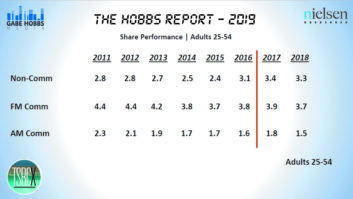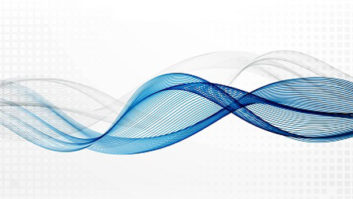
Robert (Bob) Culver Five years ago while preparing to moderate a convention session, I had an email back-and-forth with consulting engineer Robert (Bob) Culver, among others, about the state of U.S. digital radio. I like to gather ideas from as many people as possible for such events, and Culver’s questions and predictions were pungent, not intended to soothe anyone’s worries about the medium.
I recently came across my saved notes and wondered if his views had evolved; so I checked in with him.
First, here’s a flavor of what Culver told me in 2010: “Digital radio is not going anywhere very fast,” he wrote then. “It has not achieved critical mass to become an entertainment-data-communications necessity. It is not demanded by the public because it does not offer anything new.
“Even if every radio in every new car could receive digital (as a switchable option, I hope) it is not offering any substantial thing that is new. The excess data capacity is used to provide the Same Old Stuff, more programming or alternative programming from another source to overcome some technical limitation in that other source.”
Culver said that he first saw a demo of digital radio at the NAB Show in Atlanta in the days of the EIA-NAB project, during which he served on several industry working groups. He recalls offering the standing wager of a beer that 10 years after wide acceptance of DAR, its excess data capacity — over and above that required to carry the former audio program — would become more valuable than the advertising revenue from the audio program channel. He had high hopes.
Two decades later, in 2010, he told me, “My bet is safe for two reasons. 1) Wide acceptance has not been achieved, even now, a considerable time after rollout, and it might never be achieved. 2) The excess data capacity in the current digital radio systems is fast approaching zero. It is either being used for non-data needs with more audio or pared down because of interference.”
He also mused about how much non-audio programming data could be delivered to any given receiver; how digital data capacity might change under an all-digital radio mode; and how various digital platforms could deal better with dropouts.
DEMAND ECONOMY
I reached Culver again this winter to ask for an update on that and some other predictions he’d made about data capacity, connected cars and digital radio.
He emailed while sitting comfortably in retirement with his wife in Wyoming, watching hockey on TV, with the sun shining brightly on the Tetons, 10 below zero outside and a fire burning merrily in the wood stove.
“I’ll give you the short answer now: It does not look good for over-the-air broadcasting,” Culver wrote. “I re-read what I wrote over five years ago and do not find much if anything that I would change today.
“First, I think my wager for a few beers is safe (not that I wouldn’t sit down with any of my radio engineering friends over a few beers, the conversation would improve). The reason is that digital radio is not yet widely accepted, and the vanishingly small excess digital data capacity is totally swamped by other mobile data paths to the consumer.
“Something that was overlooked in addition to this wager was my prediction that the present/planned digital radio system in the U.S. is an interim system; something would come along to replace it. It has not been replaced yet and may never be; it probably will just be buried under the mobile personal communications systems not related to broadcasting.”
Culver noted that demand for data from smartphones is creating such load on cell systems that more and more infrastructure and RF spectrum are needed.

Culver communes with Ben Franklin on Center Street in Jackson, Wyo. “Here in the isolated and relatively small town of Jackson (population 10,000) I have been questioned by and talked to the town council on how they should deal with the requests for new towers. We do have a challenging topography to serve, but it is the consumer ‘demand’ that is pushing the need for more towers. They eventually settled on a plan where ‘camouflaged’ towers would get fast-track permit processing and ugly towers would go the long path to approval. So now they build ‘fake pine tree’ towers sitting up on rock ridges and sticking out like a sore thumb. Dumb! But I digress.”
Culver feels personal mobile devices have “stolen” any opportunity for broadcast data. “The potential broadcast data was too limited under the system the U.S. decided to adopt (what eventually became HD Radio) as a result of the focus on the ‘business of broadcasting’ over the benefit to the consumer.”
In general, he thinks broadcast radio, as well as TV, has reached a tipping point and is heading to near-oblivion. “The service provided by over-the-air broadcast is burdened by cost and deficiencies of that medium; it will no longer grow but will steadily decline,” he said. And poor programming choices are not helped by a digital conversion in over-the-air transmission.
“The only saving grace I can think of is the talk radio service available over long distances on rural AM radio. No, there is another saving grace: educational radio. It is not on the air as part of the business of broadcasting, but instead to educate those listening and those doing the broadcasting.” His cited local low-power FM stations KJHB and KJHR. “Universal global digital coverage is still a long way off and some areas, mine for example, we will not see it for a long time.”
Speaking of digital platforms more generally, one of the points Culver questioned five years ago was how to solve the problem of irritating digital failure modes.
“It looks like the technical fix of over-building a digital system in a service area, higher digital ERP for example — to provide a signal level far above that threshold of failure over a large area — has been acknowledged and applied as one fix.” Building more towers for cellular and personal devices is another.
“However, I think the public has become accustomed to digital dropouts. By comparison to an analog system in which you could accommodate the noise, the ‘defective’ digital service may now be tolerated.”
He closed with personal observations about our increasingly digital world.
“I get to lecture at some of the local high school technical classes on radio and related engineering. The one point I am careful to make regarding digital data is that anything you put online and into the digital domain stays there forever. If you don’t want your mother to see it, don’t post it. If you don’t want a future employer to see it, don’t post it. If you don’t want some prosecutor (or other government type) to see it, don’t post it.
“Since you mentioned connected cars, I guess I should chime in about that. The answer is easy: Do you want another information path opened up to others?
“Our private lives are not so private anymore; and it takes more vigilance to try to keep it so in the digital world. There are some digital systems that can crash or be invaded by unauthorized snoops. The connected car is only the latest: the power and water and other civic infrastructures are attractive terrorist targets. Digital is useful, but do not ignore the unintended consequences a digital system can cause.”
Comment on this or any story. Email[email protected]with “Letter to the Editor” in the subject field.











